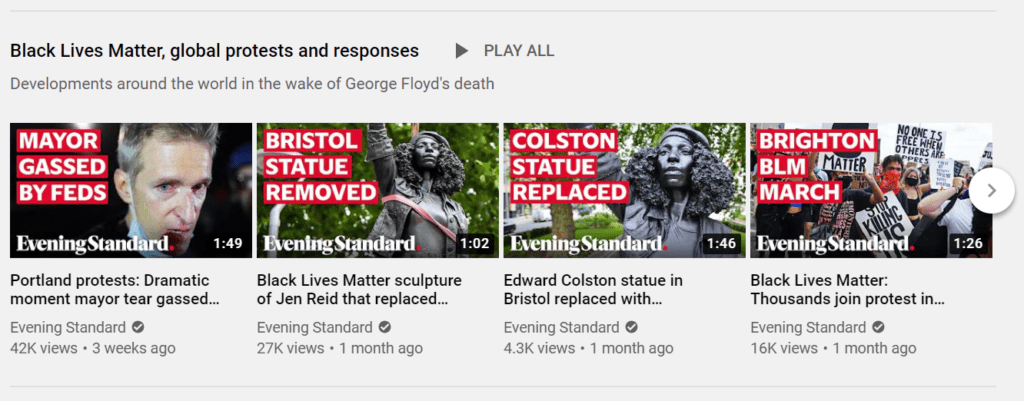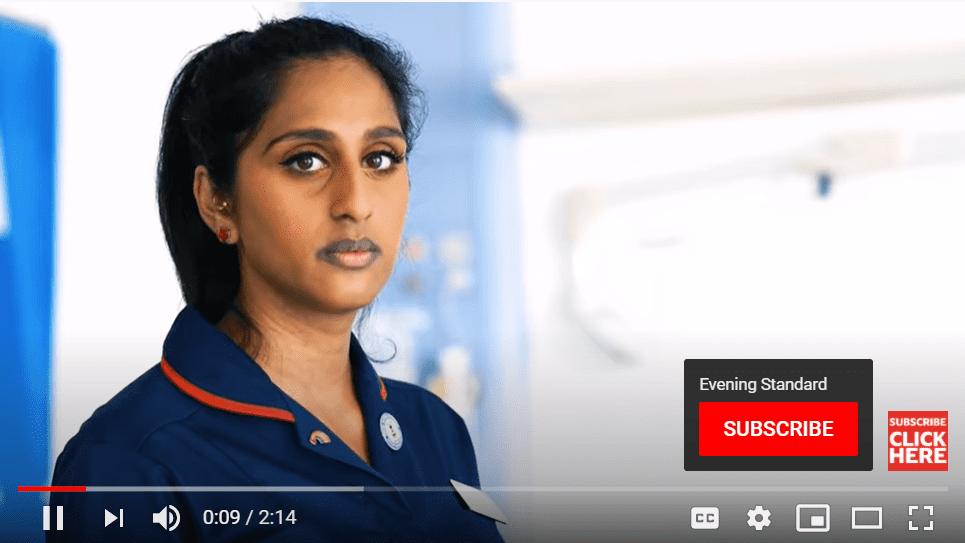|
Getting your Trinity Audio player ready...
|
The Evening Standard is best known for its London-based free daily newspaper, and has been one of the many publishers hit hard by lockdown and a dramatic reduction in advertising revenues. But as the newspaper prepares its push into digital and mobile, its audio and video team are already ahead of the game.
At the start of the year, Chris Stone, the Evening Standard’s Executive Producer of Video and Audio challenged his team to grow the newsbrand’s YouTube channel from 6,000 subscribers to 100,000 by October.
8 months later, and the channel is tantalisingly near its goal, with 93,300+ subscriptions, and video views up 5,000%. We caught up with Stone to find out why they turned their attention to YouTube, how they grew subscriptions so rapidly, and what this means for their video strategy in the future.
Identifying an opportunity
Prior to January, The Evening Standard’s YouTube channel was “languishing , unloved,” according to Stone. Although it had a respectable 6k followers, its main output had been a limited amount of lifestyle content.
“People were operating under the impression that YouTube was a place for light, fluffy stuff, and underestimating the appetite of a YouTube audience for serious content and breaking news,” he explained.
With some help and advice from the YouTube team, the Evening Standard’s video team began experimenting with the types of video content that would work well. The newsbrand publishes around 60 videos per day on their website, so there was plenty of material to choose from.
“We realised pretty quickly that breaking news, and working [the videos] into our news agenda was a really good way of doing things,” said Stone. “The audience was there straight away.”
Working out what works
The initial strategy was to take a ‘minimum viable product’ approach. “We started by taking one or two of those videos every day, putting them up and seeing what happened,” Stone outlined. “We realised that there were certain things that did quite well, and that gave us information to start building a bit of a content grid around.”
Now, the team uploads between 10 and 15 of the website’s videos to YouTube per day. What they choose and the organisation of the content has played a key part in the publisher’s rapid subscriber growth.
“We’ve had some success with grouping videos into playlists around themes,” said Stone. “I’ve seen other channels use playlists that are essentially verticals, like lifestyle or breaking news. But we’ve had better success around themes with ongoing news stories.”

This trend was spotted early on in January with the assassination of Iranian general Quasem Soleimani. The team realised that people searching for news about Soleimani on YouTube would stick around to watch more than one Evening Standard video if the next one in the playlist was on the same theme.
The effectiveness of this approach was reinforced with their Australia wildfires coverage. “We had an Australia wildfires playlist, as opposed to a World News playlist,” Stone illustrated. “That’s been a better way of building authority, because then people watched more than one video in that collection of content.”
Subscriber growth was a key KPI from the start, rather than sponsorship or individual video views. This was reflected in the call-to-action messages in the corner of each video, and an end card either with a further link to another Evening Standard video, or a subscribe button.


Podcasts as video content
YouTube is actually a surprising destination site for podcast listening, and is ahead of dominant players in some markets. A growing number of podcasters use the platform as part of a marketing strategy to take advantage of the platform’s 2 billion users, and this is something the Evening Standard team has been experimenting with as part of its YouTube strategy.
The publisher has a growing portfolio of podcasts, and has dedicated playlists for Women Tech Charge, and its flagship daily podcast The Leader. The Leader’s full 15 minute episodes are published to the classic podcast apps, but extracts of 4-7 minutes are also pushed to the Google Assistant news product, and put out as audio files with a video card to YouTube.
“This extends our reach across different platforms and geographies, and each of them has a different audience,” Stone explained. “It means the total number of listens that we’re getting is significantly higher than it would be just publishing to straight podcast platforms.”
Watch (or listen) time isn’t as high for the YouTube podcast versions as it is for the full podcasts in the app, but Stone emphasised that people are still liking, commenting and taking actions that show that they’re still positively engaging with the content.
“YouTube reaches a very high number of listeners, but they don’t listen for as long,” he said. “Whereas on podcast platforms, you reach a far smaller number of listeners, but they tend to listen all the way through and really focus on it.”
Optimising for YouTube
For Stone, one of the best techniques for encouraging growth and discovery of their channel has been a “ruthless” focus on SEO and metadata. “We’ve been treating in the same way we do when we optimise content for the website,” he explained.
“All our YouTube content has been optimised specifically for YouTube. Treating YouTube as a search engine has worked really well, and a lot of our traffic as a result has come through being served up as part of the YouTube Browse features.”
This in turn helps videos rise to the top of algorithms, and makes it more likely that they will be featured on YouTube’s homepage or recommended to audiences. “That all starts with having good SEO,” Stone emphasised.
Unlocking the future
The channel is now potentially just weeks away from hitting the 100,000 subscriber target Stone set the team eight months ago. Part of the reason for choosing that target was psychological; having a big number to aim for. But passing 100k subscriptions will also unlock the next level of YouTube’s Creator Benefits, which will include a dedicated YouTube partner manager, exclusive invitations to top creator events, and access to YouTube’s production spaces.
It’s a number that will also be attractive to commercial partners. Although the publisher has yet to have any dedicated sponsored content on YouTube, it is an opportunity Stone is keen to enable sales teams to pursue once they have reached the milestone. The channel also has a high proportion (66%) of subscribers from the UK, which will help with commercial pitches.
Stone also foresees YouTube now moving to become a considered part of the Evening Standard’s ongoing content strategy, rather than just on the side. So far, the growth strategy has relied on content the Evening Standard is already creating and putting out on its website, which has made it a low-cost but high-reward effort.
“Personally, I would like to start experimenting with some more original content, some high-quality original journalism” Stone said. “But as part of a broader question of the Evening Standard’s digital strategy going forward, YouTube now becomes part of that conversation, whereas before it wasn’t.”
As the outlook grows more uncertain for the Evening Standard’s traditional revenue streams, Stone’s push to aggressively grow its video audience early in the year looks, with hindsight, like a very wise move.



